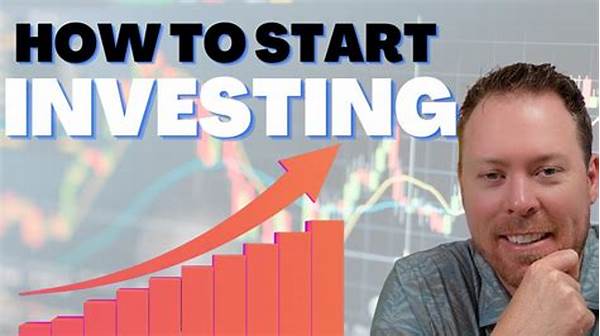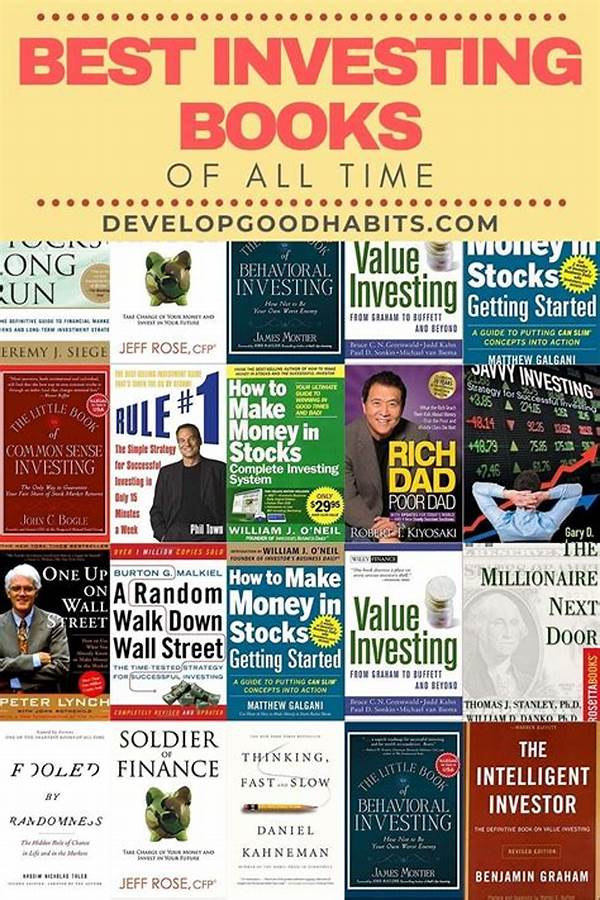How To Start Investing For Beginners
Investing can seem intimidating at first, especially if you’re unfamiliar with financial concepts and worried about potential risks. However, it’s crucial to understand that investing is a powerful tool for building wealth over time. For beginners, the journey of investing begins with education and strategy. A basic understanding of different investment types and how they align with your personal goals is where you start. Imagine diving into the world of investments, armed with knowledge and ready to make informed decisions. It’s like preparing for a dance competition; you wouldn’t show up without knowing the steps, would you?
Read More : Best Apps For Tracking Your First Portfolio
Building knowledge is your first step on the “how to start investing for beginners” journey. Fortunately, the digital age offers endless resources. Whether it’s reading investment blogs, listening to finance podcasts, or enrolling in online courses, the information is at your fingertips. For instance, knowing the difference between stocks, bonds, and mutual funds can help you decide which investment vehicles suit your financial goals. Like choosing between hip-hop, salsa, or ballroom for your dance repertoire, each investment type has its rhythm and appeal.
Once you’ve equipped yourself with knowledge, the next step is to define your investment strategy. Setting clear financial goals is essential, much like selecting a dance style. Are you investing for retirement, a house down payment, or a child’s education? Having a clear objective will help determine how aggressive or conservative your investment approach should be. This conscious effort pays off when you see your investments grow and move closer to your goals. It’s time to lace up those dancing shoes and step onto the investment dance floor with confidence!
Building a Solid Foundation
Let’s delve deeper into the essential steps of embarking on the thrilling investment journey. The thrill of learning “how to start investing for beginners” is akin to unlocking a treasure of possibilities. Picture yourself at a starting line, ready to dash into a world bursting with financial opportunities, like a marathon runner with a shiny new pair of sneakers.
First, managing your expectations and understanding the risks involved is imperative. It’s easy to get carried away by success stories of early investors who made millions overnight. But remember, those stories are more the exception than the rule. While the potential for returns is great, investing is a gradual process. Think of it as planting a garden; you wouldn’t expect flowers overnight, but with care and patience, your garden flourishes.
Next, let’s talk about diversifying your portfolio. Diversification is your safety net, ensuring that not all your investments are dependent on a single market movement. Imagine juggling multiple balls with ease, each one representing a different asset class. If one ball drops, you still have others in motion, mitigating overall risk. Diversification is a classic strategy for managing risk, making it a cornerstone of any beginner’s investment plan.
The Role of Emotional Discipline
When learning how to start investing for beginners, emotional discipline cannot be overstated. Emotional bias can lead to impulsive decisions, steering your investments in the wrong direction. Seasoned investors often highlight emotional control as the secret behind their success. Striking a balance between risk and emotion is vital, much like a tightrope walker maintaining poise and balance.
Consider the 2020 stock market crash due to the pandemic. Many novice investors panicked and exited the market, crystallizing their losses. On the other hand, those with emotional control stayed invested and benefitted from the subsequent recovery. The lesson here is resilience. Just like finding the right tempo in music, finding harmony between logic and emotion in investing is crucial.
Objectives for Beginner Investors
Below are key objectives that align with your journey of “how to start investing for beginners”:
The roadmap to successful investing is like an elaborate maze, but these objectives form the breadcrumbs that guide your path. Whether you’re a student or stepping into the professional world, these guiding principles anchor you in stable waters amid waves of market volatility.
Understanding the Basics of Investing
Investing, like a well-rehearsed orchestra, requires tuning into the right instruments at the right time. As beginners, it’s vital to start by deciphering the jargon that fills the investing landscape. What is the difference between stocks and bonds, or what makes ETFs distinct? These questions build the core framework of your investment venture.
From dabbler to doyen, the journey of knowing “how to start investing for beginners” involves understanding factors like dividends, compound interest, and appreciation. With an educated mindset, you start to appreciate the dynamism of the financial markets. Similar to recognizing a masterful guitar solo, having that ‘aha’ moment when all these concepts click is gratifying.
Moving beyond terminology lies the strategic execution. Starting modestly with investments helps you familiarize yourself with market fluctuations without exposing you to extensive financial risk right away. It’s like playing a game; start with level one, then gradually advance as your confidence and understanding grow. Just as in real life, starting strong sets a precedent for continued success.
Prioritizing Investment Goals
As you delve deeper into “how to start investing for beginners,” recognizing and prioritizing your investment goals become vital. Different objectives call for varied investment strategies. Drawing inspiration from a chef selecting spices, aligning investments with personal life goals maximizes satisfaction and success.
For example, a young professional might prioritize growth investments like stocks to maximize return over time. Meanwhile, someone nearing retirement age may shift focus to stable income investments. Recognizing this helps in developing tailored plans that balance risk, time, and financial targets effectively.
10 Tips for Beginner Investors
Here’s a quick guide to jumpstart your investment pursuit:
Setting off on your maiden voyage in the vast sea of investment requires these actionable steps. Like assembling a team for a sports tournament, these pillars equip you to navigate the investment sphere with ease. They are your compass in the unpredictable waters of financial decision-making.
Commence your journey immediately, and bask in the joy of setting your finances on a growth trajectory, echoing the satisfaction of achieving a long-term DIY project. The gratification you reap from taking these initial steps is immense and unwavering.



